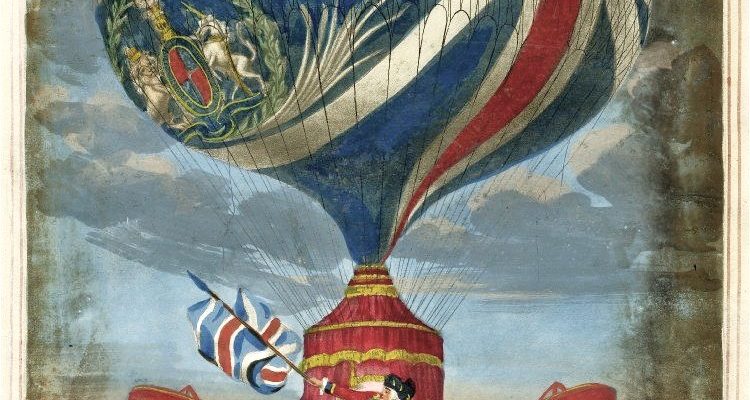On 19 September 1783 a hot-air balloon made of silk and paper and designed by Joseph-Michel and Jacques Étienne Montgolfier rose above the palace of Versailles watched by an amazed crowd, including the King and Queen of France. In its basket were a sheep, a duck, and a cockerel. Balloon flights carrying human passengers swiftly followed: on 15 October 1783 a tethered Montgolfier balloon carrying one man stayed aloft for four minutes before landing safely, and on 21 November an untethered balloon carrying two men flew for 25 minutes over Paris before returning safely to earth. The age of ballooning was born.
These momentous aerial events were widely reported and excited huge interest, not least in Britain. The first person to take a balloon flight in the British Isles was James Tytler, a Scottish apothecary who had become fascinated by ballooning while writing scientific articles for the Encyclopedia Britannica. Inspired by the Montgolfiers’ achievements, Tytler constructed a ‘Fire Balloon’ which successfully took flight over Edinburgh, with himself as passenger, on 27 August 1784.
This first British hot air balloon flight was followed less than three weeks later by the better-known ascent of Vincenzo Lunardi. On 15 September 1784 Lunardi, the son of a Neapolitan diplomat, made a 24-mile balloon flight from London to Hertfordshire. He was immediately feted as a hero, and went on to travel the country making dozens more balloon flights in a blaze of publicity. On 23 August 1786, fresh from making several celebrated ascents in Scotland, Lunardi came to York with his balloon. Cheered on by a great assembly of onlookers, he took off from an orchard near the Minster, rose to a ‘prodigious height’, and rapidly disappeared from sight in an easterly direction. He encountered hail, rain, snow, and an electrical storm on his flight, but eventually landed, safely but ‘quite benumbed with cold’, at Kilnwick Percy near Pocklington, twelve miles from York.
The writer Horace Walpole coined the term ‘Balloonomania’ to describe the huge popular enthusiasm for ballooning that swept the country in response to such exploits. Songs were written about ballooning, the exploits of balloonists were reported in the press and illustrated in prints and cartoons, ballooning appeared in poetry and fiction, and ladies sported skirts and bonnets designed to resemble balloons. Whereas in France ballooning was a serious matter for scientists and engineers, in Britain it was an exercise in entertainment dominated by daredevils seeking fame and fortune. Some disapproved of the seemingly useless spectacle: The Times of 15 September 1785 declared ‘the rage for ballooning’ to be ‘the folly of the age’ and urged that ‘some restriction should be laid on the madness of their frequent trips into the air, without one single good purpose being produced’. The public, however, thrilled by the spectacle of balloons conquering the skies, did not agree, and what the Gentleman’s Magazine of November 1784 called ‘the rage for ballooning’ continued unabated into the first decades of the nineteenth century.

Name: Fairfax House
Source: In Pursuit of Pleasure: Entertaining Georgian Polite Society (Fairfax House, 2016)
